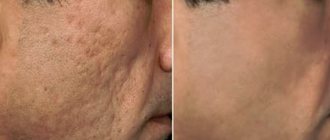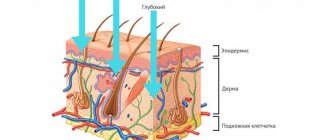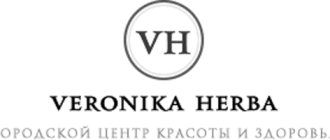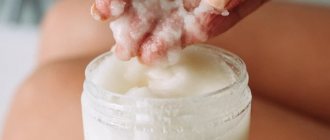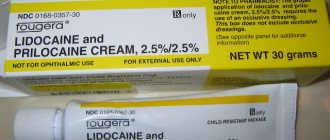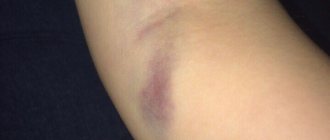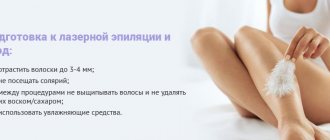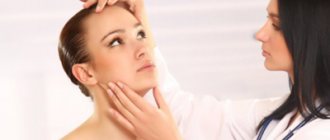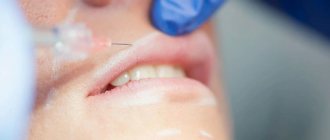- Laser resurfacing
- Non-ablative resurfacing
- Prices for laser resurfacing
Laser skin resurfacing is a deep peeling, during which, under the influence of a laser, the surface layer of the skin evaporates, which promotes increased production of collagen and elastin.
The skin in the correction area becomes an area of controlled burn, so after the procedure the dermis behaves accordingly and requires special care during the rehabilitation period. The duration of recovery depends on the type of device used, the adjustable power and depth of beam penetration, as well as on the individual characteristics of the skin.
ResurFX non-ablative resurfacing to rejuvenate and improve skin quality.
Laser face resurfacing!
Laser resurfacing. Treatment of post-acne scars!
Types of laser resurfacing devices
There are several main types of laser resurfacing, each of which has a special laser model. The choice of laser installation is made in accordance with the problem to be solved and the skin type. The names of lasers determine the type of active medium in which the beam is generated:
- Carbon dioxide CO2 devices - radiation is formed in carbon dioxide with a high concentration, has a long light wavelength, which allows the device to affect the depth of the skin, inaccessible with other types of radiation. Not suitable for correcting areas with delicate and thin skin; it is used to remove old cells, eliminate stretch marks, deep wrinkles, scars, tumors and spots, and provides a noticeable lifting effect. The rehabilitation period averages 2 – 4 weeks, during which time traces of the intervention disappear. Complete skin regeneration takes up to six months.
- Erbium devices - devices generate several microbeams that heat tissue in the desired location, without capturing nearby surfaces, the wavelength is limited - the effect is on the upper layers of the epidermis. The device is suitable for polishing sensitive skin of the eyelids and neck, eliminates medium-depth wrinkles, fights signs of pigmentation, evens out skin tone and provides a lifting effect. The rehabilitation period takes about 1 week.
- Fractional devices - have a targeted surface effect, do not injure healthy tissues, as a rule, a series of procedures is required to achieve maximum effect. Radiation promotes the renewal of aging skin, triggers the production of collagen, but does not “evaporate” the keratinized dermal layer and is not able to correct serious age-related changes. Complete tissue restoration occurs in 4–10 days.
Depending on the depth of the beam, non-ablative, ablative and fractional laser rejuvenation is distinguished. The non-ablative method (more often referred to as erbium resurfacing) does not injure the skin surface, involves light heating (42° - 45°) or coagulation (45° - 60°) of tissue, and there is practically no rehabilitation. Ablative laser rejuvenation involves a continuous impact on the entire surface of the skin; as a rule, it means carbon dioxide resurfacing. During fractional rejuvenation, the laser beam is scattered into many microbeams; depending on the adjusted depth of the device’s impact, this type of intervention can be classified as either ablative or non-ablative.
How often can you do it
Sanding is not done often. The optimal frequency between treatments is 1-2 months. During this time, the skin is completely restored and you can begin to prepare for the next procedure.
Doctors prescribe the number of sessions depending on the problem and condition of the client’s skin. You can get rid of fine wrinkles and acne in one go. Deep scars and scars disappear after 4-6 procedures.
It is necessary to give the skin a rest for at least a year after completing the course of treatment. Even if the clinic is holding promotions and has set a low cost for laser facial resurfacing.
General recommendations
So, depending on the individual characteristics of the body, the type of device used and the depth of penetration of the laser beam, the rehabilitation period can take from 1 week to 1 month. During this period, for faster restoration of the skin, it is necessary to follow a number of recommendations common to all types of laser resurfacing:
- you should not wash your face for the first few days after the procedure;
- during the rehabilitation period, you should not use peelings, scrubs and aggressive cleansers;
- refuse decorative cosmetics until major peeling passes and the crusts fall off;
- apply light texture products and moisturizers to healed skin;
- sleep on your back for the first 2 - 5 days;
- avoid temperature swings and direct sunlight, use sunscreen for a month after the procedure;
- refuse to visit the solarium, bathhouse and swimming pool;
- reduce physical activity.
Laser processing steps
The doctor performs initial treatment with a laser beam, removing the surface layer of the epidermis
. After treatment, the facial skin becomes whitish. This means that the laser beam has affected the basement membrane. If local anesthesia was performed, the anesthetic cream is reapplied. After 5-10 minutes the procedure is repeated.
The procedure is carried out until damaged areas of facial skin are removed or until droplets of blood appear. This will indicate that the laser beam has penetrated the papillary or papillary layer of the dermis, which is located under the basement membrane and contains a large number of blood vessels and capillaries. It is at this level that an excellent effect is achieved, and the risk of complications is minimal.
After the procedure, a soothing mask
, consisting of absorbent, basalming and epithelializing components. With it, the recovery processes will go much faster. If classic deep facial resurfacing is performed, the patient can be left in the hospital for 2-3 days under the supervision of a doctor.
People with dark skin, allergies, and a tendency to poor healing of scars should be especially careful when performing the procedure. If there are contraindications or allergies, you should consult your doctor. After taking retinoids, you should wait 2-3 months before resurfacing.
Stages of healing
Recovery after laser resurfacing can be divided into main stages. At the first stage, the primary process of regeneration of damaged skin begins. There is slight swelling, redness, crusts and peeling. During this period, it is especially important to follow the recommendations described above.
At the second stage , the skin returns to normal; the main rule is not to forget about protection from UV radiation and moisturizing. You can gradually return to wearing light makeup and normal skin care without using aggressive products.
With the onset of the third stage, there is no need for special care shown in the first 2 stages. To speed up the rehabilitation process, you can resort to restorative injection procedures, such as mesotherapy or biorevitalization.
How to prepare?
Before laser resurfacing, the patient should follow a number of rules in order to properly prepare the skin for the procedure.
You should not sunbathe or visit a solarium for two weeks before the procedure. The laser beam is quite powerful, which can lead to excessive destruction of melanin. In this case, the skin will become unnaturally light and will differ significantly in color from other areas of the skin.
Be sure to tell your esthetician about any medications you are taking, especially antibiotics, hormonal medications, and medications that alter blood clotting. All of them can change the photosensitivity of the skin, so the doctor should be aware of their use before deciding to undergo such a procedure.
Choose the right time for this procedure - this should be the season with the least solar activity. The most optimal time for laser resurfacing is the period from October to the end of March.
Pay attention to the individual characteristics of your body. For example, patients who experience rashes on the face before menstruation should undergo laser resurfacing after menstruation so that the skin has time to return to normal.
WHAT TO DO DURING THE HEALING PERIOD?
After laser resurfacing, a special coating is applied to the skin, which performs protective and restorative functions. After removing it, solcoseryl ointment is applied to the treated area of the face. For a week, the procedure for applying this ointment should be carried out daily using the following technology:
- remove remaining ointment with chlorhexidine solution;
- make a lotion (15 minutes) by moistening a gauze pad in a slightly pink solution of potassium permanganate (mix 3-4 drops of the concentrated product with cold saline);
- apply solcoseryl ointment (after the 3rd day - “Bepanten” until the skin is completely restored).
It is extremely important to carry out this procedure at least three times a day for 3-7 days until the healing period is over.
How skin recovers after laser
- First week. Laser procedures are low-traumatic, so pain, swelling, redness and other unpleasant symptoms disappear in the first days, and by the end of the week the affected area looks absolutely normal. With deep resurfacing using a CO2 laser, full recovery time can be up to 2 weeks.
- Two weeks later. Patients get rid of all discomfort. The laser beam improves the appearance of the skin and initiates rejuvenation processes. Fibroblast cells are activated, secreting proteins from which the skin framework is built. Therefore, patients feel positive changes - discoloration of hyperpigmentation areas, smoothing of wrinkles, improvement in skin color and appearance.
- After three or four weeks. Signs of rejuvenation and improvement of the face and body are already clearly visible. But during this period, the skin is still quite delicate, so it needs to be protected with sunscreen with a high protection factor - SPF 45 or higher. At this time, you can, if desired, undergo a repeat laser session to enhance the positive results.
Result after a laser procedure before and after
Regardless of whether a small mini-procedure or extensive treatment is planned, following these recommendations will maximize the effectiveness of the effect and avoid complications - inflammation, infection, irritation, age spots.
With proper preparation and post-procedure care, laser exposure is well tolerated and gives good results. Therefore, more and more patients prefer laser from various cosmetic methods that improve skin condition.
How to care for your skin after laser exposure
Proper care is very important to achieve the desired results. Special care must be taken not to spoil the work of cosmetologists.
What recommendations do doctors give:
- After procedures, especially if they affect the deep layers of the skin, redness and swelling of the skin occurs, accompanied by pain and discomfort. You can relieve symptoms by using ice cubes, but you should avoid direct contact with your skin. Therefore, ice is placed in the cloth. You can use an ice heating pad.
- For those who wear contact lenses, after laser procedures in the eye area, it is better to use glasses until the tissue heals.
- Moisturizing cream or Vaseline will relieve pain, swelling and burning, which will soften the skin and remove discomfort.
- A solution of natural apple cider vinegar is an excellent astringent that promotes healing.
Skin care after laser exposure
It must be remembered that the new skin that appears after laser exposure is very sensitive to sunlight. Therefore, it should be protected with sunscreen and sun exposure should be avoided as much as possible. Otherwise, age spots or even sunburn will appear on the face and body at the site of the procedure.
Fraxel: three types of procedures
The first question we need to answer is which Fraxel procedure are you going to undergo? Fraxel re:store, Fraxel re:pair or Fraxel re:fine? Despite the apparent similarity in names, there is a noticeable difference between the methods.
Fraxel re:fine - the most gentle rejuvenation. The procedure is ideal for young girls to solve local aesthetic problems and prevent age-related changes. In a nutshell, Fraxel re:fine is maximum safety.
Fraxel re:pair is on the opposite pole. The deep effect on the skin makes it possible to solve complex cosmetic problems, but rehabilitation after Fraxel re:pair is accompanied by noticeable discomfort. Fraxel re:pair is uncompromising effectiveness according to the principle “beauty requires sacrifice.”
Fraxel re:store DUAL is the golden mean. Today, the technique is considered the standard of laser fractional rejuvenation. Non-ablative photothermolysis occurs without compromising the barrier properties of the skin. Fraxel re:store DUAL gives excellent results with minimal difficulties during the rehabilitation period.
The secret to the effectiveness of the re:store DUAL fractional laser is the combination of two types of radiation. Erbium laser (Er:fiber) generates waves with a length of 1550 nm. They penetrate to a depth of one and a half millimeters and trigger dermal regeneration processes at the cellular and molecular level. The Tm:fiber 1927 nm thulium laser operates at a depth of up to 200 microns. It renews the epidermis and copes well with age spots.
In the material about fractional rejuvenation, we talked in detail about the features of the procedure, and therefore we are now moving on to the topic of this material - recovery after the Fraxel procedure.
License
There are not yet enough clinical studies on laser skin resurfacing to draw any strong conclusions. And if the immediate consequences of this procedure have been studied in sufficient detail, then with more long-term complications the situation is completely different. This is mainly due to the fact that patients escape medical supervision immediately after leaving the clinic.
It should also be remembered that among those who decide to undergo laser resurfacing, the vast majority are women, who are not so easily persuaded to participate in a large-scale clinical study due to their sensitivity to everything related to their appearance.
Along with the desired effect of thermal tissue damage (reduction of denatured collagen fibers, smoothing of the skin), side effects also occur. Slow re-epithelialization, prolonged erythema, dyspigmentation are the main problems that the doctor and patient encounter when using this technology. They are temporary. Along with this, more serious complications are possible, such as hyper- and aromatic scars, as well as hyperpigmentation of the skin.
One of the first serious studies of the risks associated with laser resurfacing can be considered a large-scale study by Nanni and Alster in 1998, which involved 500 patients. Resurfacing was performed with a CO2 laser on various areas of the face (a total of 1589 areas). The most common complication of the postoperative period was erythema, which lasted an average of 4.5 months after the procedure. Hyperpigmentation was observed in 37% of patients. Outbreaks of acne and dermatitis were noted in 10-15% of patients, activation of herpes – in 7.4%. Other complications, such as scarring and hyperpigmentation, occurred in less than 1% of patients. The authors conclude that CO2 laser resurfacing produces a relatively low percentage of complications, which can be further reduced by optimizing the laser system parameters, more careful patient selection, and improving patient management techniques in the postoperative period.
The most common types of complications after laser resurfacing are:
- Erythema,
- pigmentation disorders,
- Scarring,
- Infectious complications.
ERYTHEMA
Residual erythema after skin resurfacing with a CO2 laser reaches swelling for 3-4 months. After resurfacing with an erbium laser, the erythema is less pronounced and in most cases disappears almost completely within two weeks after surgery. Histological studies suggest that the redness is explained by both the inflammatory reaction and the insufficient maturity of the new epithelium. Some inconvenience may be caused to patients by the presence of a demarcation line, which becomes especially noticeable when resurfacing is carried out on limited areas of the skin. However, the demarcation line is a temporary phenomenon, unlike scars, the risk of which increases with extensive resurfacing.
PIGMENTATION DISORDERS
Pigmentation disorders after laser resurfacing are of two types - hyperpigmentation, which is usually observed in patients with dark skin, and hypopigmentation. Hypopigmentation is an unfavorable sign, since its appearance indicates local death of melanocytes.
SCAR TISSUE
The most serious complication is the formation of scars (hypo and hyperatrophic) - the risk of their occurrence increases with increasing radiation energy, increasing pulse duration and number of passes. The risk of scarring is higher with CO2 laser resurfacing due to the fact that it is more difficult to control the depth of the damage.
ACCESSION OF INFECTION
With laser resurfacing, as with any method of removing the epidermis, a dormant infection that is hidden in the thickness of the skin may awaken. According to Fitzpatrick et al., the incidence of infectious complications after laser resurfacing is about 5%, with Pseudomonas aeruginosa (41%), followed by Staphylococcus aureus (35%), Staphylococcus epidermidis (35%), Candida spp ( 24%). It should be noted that approximately half of the patients have a mixed infection. Provocative tests (alcohol, spicy food, low-energy laser irradiation) help to assess the number and activity of potentially dangerous microorganisms in the skin. With timely treatment, infectious complications can be eliminated quite well, but cases of infections leading to long-term inflammatory processes and scar formation have been described. Therefore, prophylactic antibiotic therapy and antiviral treatment (famciclovir) are recommended before laser resurfacing.
After surgical removal of the formation
When the formation is removed using a scalpel, an incision is made and a cosmetic suture is applied; in this case, no special care is required either. Usually we stick on strips, under which the wound heals itself and you come to us on the seventh day to remove the stitches. If you get these strips wet, it is advisable to dry them and treat them with an alcohol solution or chlorhexidine.
If the wound after removal is large or located on the scalp, we treat such places with either iodine solution, betadine, or fucorcin so that a secondary infection does not join the wound.
